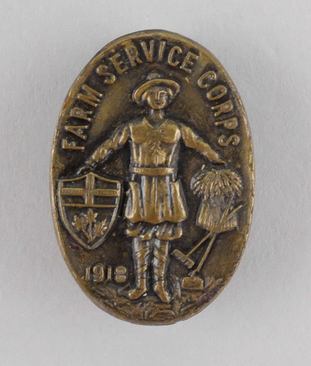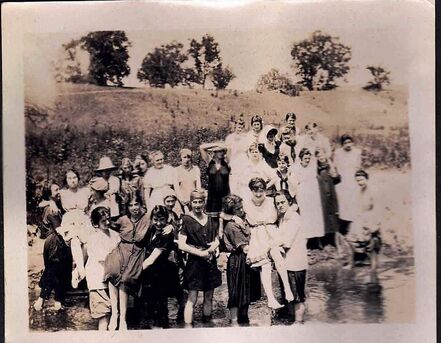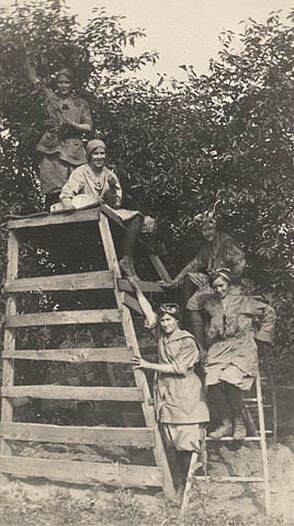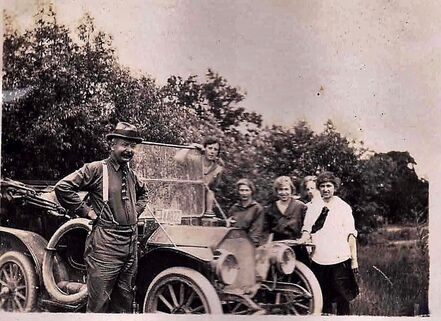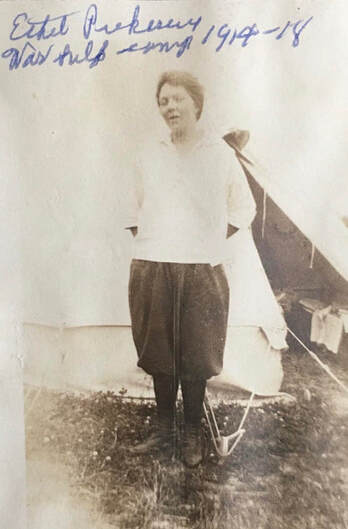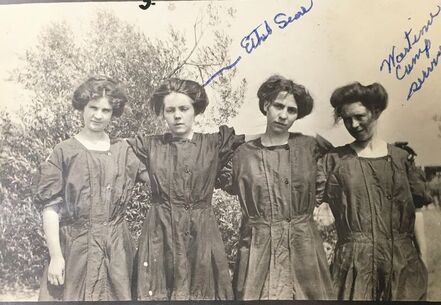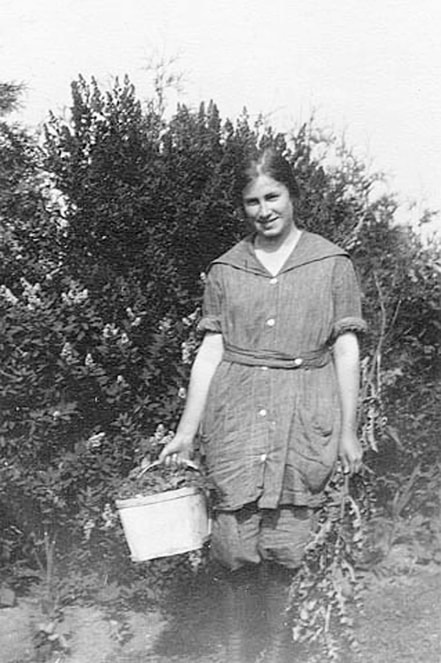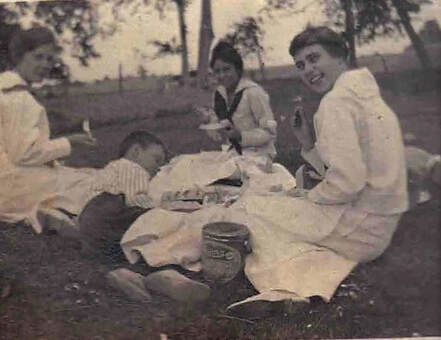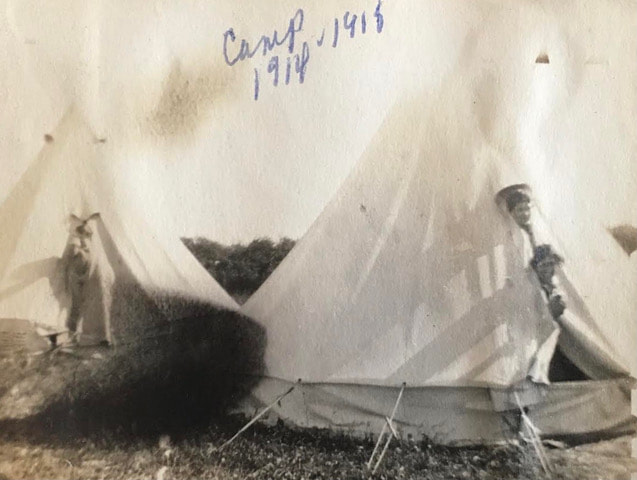Pin.
The Farm Service Corps pin, given to women who participated in the program, features a woman wearing a dress, tall work boots, and a wide brimmed hat, standing with her arms outstretched. On her right is a wheat sheaf, rake, and hoe, and on her left is a crest for the province of Ontario. Both are oval shaped, but the 1917 pin is oriented horizontally, and in 1918, it is oriented vertically.
The Farm Service Corps pin, given to women who participated in the program, features a woman wearing a dress, tall work boots, and a wide brimmed hat, standing with her arms outstretched. On her right is a wheat sheaf, rake, and hoe, and on her left is a crest for the province of Ontario. Both are oval shaped, but the 1917 pin is oriented horizontally, and in 1918, it is oriented vertically.
Women Needed on Farms!
In 1914, Canada entered into a global war and provided a staggering number of enlisted men. At the same time, farmers were being asked to produce more food products than ever before to feed soldiers, civilians, and allies. This demand, with a depleted work force, required the recruitment of new sources of labour: the province of Ontario turned to women. First, women were pulled into the industrial sector and munitions plants, and hostels were set up in urban areas by the Y.W.C.A. to house and supervise these new, independent women workers.
By 1917, the Ontario Government also requested hostels for girls in the food production industry and formed the National Service Committee to help organize this, in partnership with the Y.W.C.A. The first hostel for women farm workers was opened in 1917 in Harriston, Ontario, and soon, other accommodations had been established for girls and women working on farms and picking fruit in the area. By the end of 1917, 12 camps had been in operation, housing approximately 900 girls. Most of the hostels had been located in the Niagara region or near Lake Erie.
In the first annual report, it was noted that women:
The camps expanded in 1918. 38 camps across the southern region of Ontario housed 1,218 girls working on farms. The smallest camp hosted 10 girls, and the largest held 100.
In 1919, 23 camps hosted 600 girls, and then the program was dissolved.
By 1917, the Ontario Government also requested hostels for girls in the food production industry and formed the National Service Committee to help organize this, in partnership with the Y.W.C.A. The first hostel for women farm workers was opened in 1917 in Harriston, Ontario, and soon, other accommodations had been established for girls and women working on farms and picking fruit in the area. By the end of 1917, 12 camps had been in operation, housing approximately 900 girls. Most of the hostels had been located in the Niagara region or near Lake Erie.
In the first annual report, it was noted that women:
- picked and packed fruit
- cared for horses
- pitched hay
- drove motorized vehicles to market
- sold fruit at stands and markets
- cared for chickens
- worked in canning factories and basket making factories
- hoed fields for up to 10 hours a day
The camps expanded in 1918. 38 camps across the southern region of Ontario housed 1,218 girls working on farms. The smallest camp hosted 10 girls, and the largest held 100.
In 1919, 23 camps hosted 600 girls, and then the program was dissolved.
Sources:
Canadian War Museum. Farming and Food. Accessed June 30, 2023. www.warmuseum.ca/firstworldwar/history/life-at-home-during-the-war/the-war-economy/farming-and-food/
Harshaw, Josephine Perfect. When Women Work Together: A History of the Young Women's Christian Association in Canada. Canada: Ryerson Press, 1966.
Innis, Mary Quayle. Unfold the Years: A History of the Young Women's Christian Association in Canada. Toronto: McClelland & Stewart Ltd., 1949.
Kechnie, Margaret. "'I'd Give Anything to Come Home:' The Farmerette Movement in Ontario during the First World War." Ontario History 113, No. 1 (Spring 2021): 27-40.
Canadian War Museum. Farming and Food. Accessed June 30, 2023. www.warmuseum.ca/firstworldwar/history/life-at-home-during-the-war/the-war-economy/farming-and-food/
Harshaw, Josephine Perfect. When Women Work Together: A History of the Young Women's Christian Association in Canada. Canada: Ryerson Press, 1966.
Innis, Mary Quayle. Unfold the Years: A History of the Young Women's Christian Association in Canada. Toronto: McClelland & Stewart Ltd., 1949.
Kechnie, Margaret. "'I'd Give Anything to Come Home:' The Farmerette Movement in Ontario during the First World War." Ontario History 113, No. 1 (Spring 2021): 27-40.

